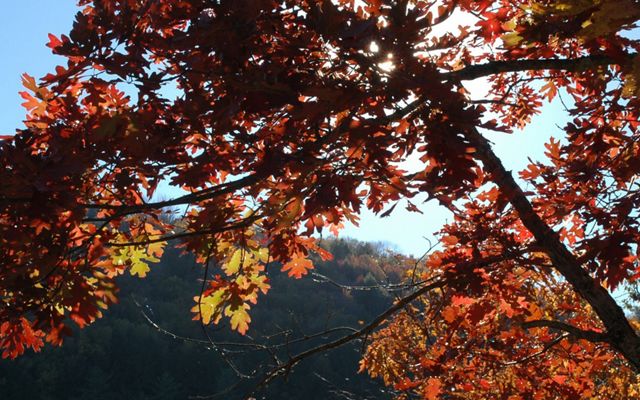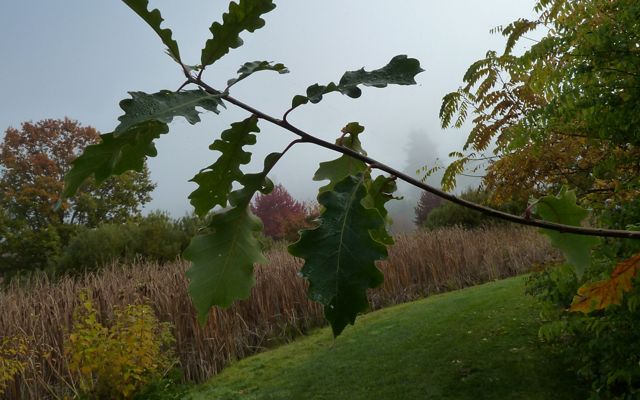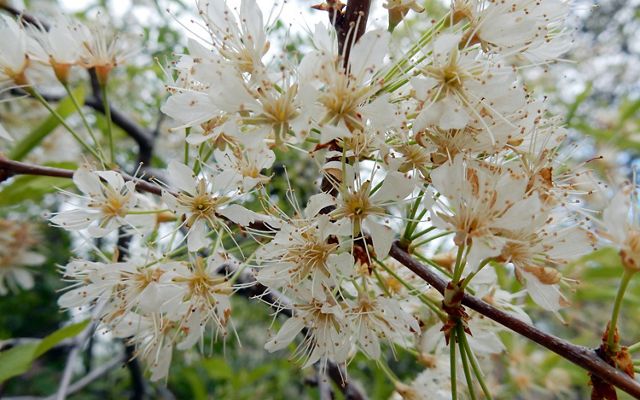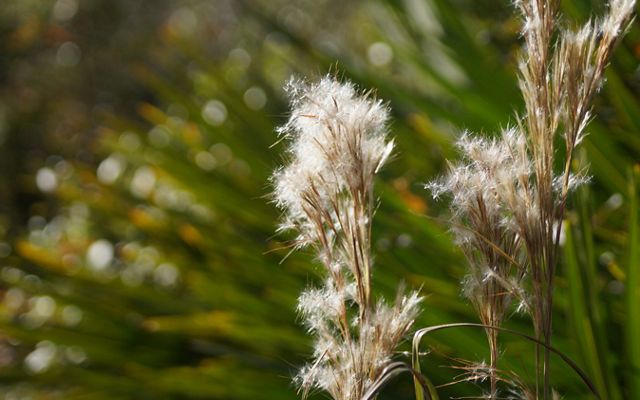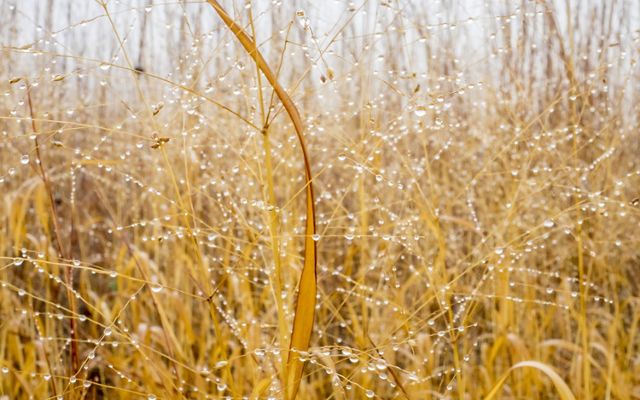Putting Down Roots with Native Plants
Our garden guide will help you choose plants native to the mid-Atlantic region, supporting pollinators and biodiversity.
Getting Started
Ready to dig in? Jump to more on:
Planting your yard, balcony or community garden with plants native to your area is a great way to support local wildlife and biodiversity. Native plants also require less care and fewer resources, making them a good fit for gardeners of all experience levels.
What are native plants, and why are they important?
Plants and animals have evolved together over millennia. From the tiniest micro-organisms in soil and water, to the largest mammals, all flora and fauna rely on their uniquely evolved habitats to survive.
A plant that is naturally found in a given geographic area is native—it was not introduced to an ecosystem by humans either deliberately or accidentally. Native plants have adapted to the conditions of their surroundings, but factors like climate change and the introduction of invasive plant species—which crowd out and kill native ones—have led to their serious decline and disappearance. When native plant habitats alter or go away, so does the native wildlife that depends on them for food, shelter and places to reproduce.
The benefits of choosing native plants
Ecology teaches us that everything in nature is connected. Insects that evolved with native plants feed on and help those plants flourish through pollination and the decomposition of organic matter, creating nutrients for the soil. Insects also serve as food for other indigenous wildlife species in a very specific and delicate chain.
Unfortunately, nearly half of all insects worldwide have already disappeared. In just the last 50 years, nearly 70% of the world’s birds, amphibians, mammals, fish and reptiles have also vanished. The good news is that we can all help in the recovery of the planet’s depleted biological diversity.
As governments and global conservation organizations work to protect 30% of the world’s lands and waters by 2030, private citizens can do their part to restore the world’s biodiversity by returning native plants to our cities and suburbs.
How You Can Help by Choosing Native Plants
Most land in the United States is privately owned and much of that by individual homeowners. Entomologist Doug Tallamy advocates that replacing even a portion of your lawn and landscaping with native plants will produce habitat for micro-organisms, insects, birds and other pollinators to thrive. Even if you don’t own your home or have a yard where you live, you can contribute to the effort by planting native species in small gardens or containers.
Explore our short list of examples of plant species native to the mid-Atlantic region. For more information and ideas, scroll to browse additional resources to help get you started, or use the links below to jump to a specific type of plant. All of the plants listed are perennials, so they should come back year after year.
Flowering Plants (Herbaceous)
- Wreath goldenrod (Solidago caesia)
- New England asters (Symphyotrichum novae-angliae)
- Woodland sunflowers (Helianthus divaricatus)

Wreath goldenrod (Solidago caesia). Often confused with ragweed, goldenrod supports hundreds of species of insects, birds and other pollinators and thrives in sunny and shady environments. This species is less rampant than others—like the Canada or rough-stemmed species—and easier to manage. It likes loamy or clay-filled soil that is moist or dry.
New England aster (Symphyotrichum novae-angliae) is also especially favored by numerous wildlife species. This autumn-blooming plant has showy bluish/purple flowers, thrives in the mid-Atlantic and likes full to partial sun and loamy/moist soil.
Woodland sunflower (Helianthus divaricatus) is not the heavy-headed giant we often associate with the name. These more delicate flowers are especially attractive to goldfinches who enjoy feeding on this composite’s petals. The plants like partial sun and loamy soil that can be either dry or moist.
Trees
- White oak (Quercus alba)
- Swamp white oak (Quercus bicolor)
- Black/Swamp willow (Salix nigra)
- Wild cherry (Prunus serotina)
- Pin/Fire cherry (Prunus pensylvanica)
White oak (Quercus alba) is perhaps one of the most important native tree species to the mid-Atlantic region, providing insects and their larvae with food, shelter and habitat. It prefers loamy and sandy soils and full to partial sun. Swamp white oak (Quercus bicolor) is a great variety if you have more limited space and/or harsher growing conditions for planting.
Black/Swamp willow (Salix nigra) thrives in wetlands, swamps and wet meadows and prefers full to partial sun. It does well in a variety of soil types. This could be a good consideration for areas prone to flooding.
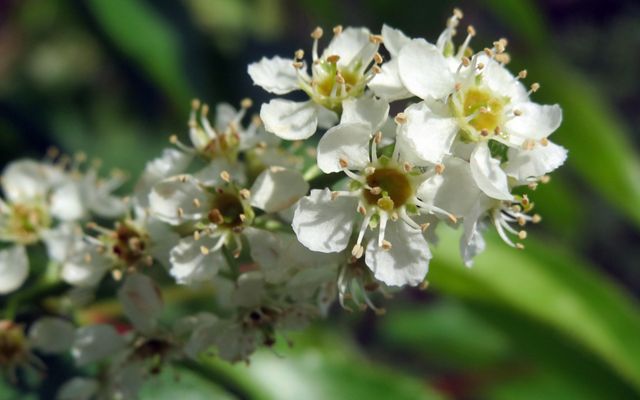
Wild cherry (Prunus serotina) is also called black cherry and rum cherry. One of several native cherry trees, this species produces fruit—attracting and feeding a variety of birds. It thrives in sunny spots with dry or moist loamy soil from New York to Virginia. Pin/fire cherry (Prunus pensylvanica) is a good variety for smaller yards.
Grasses and Sedges
- Broom sedge (Andropogon virginicus)
- Switchgrass (Panicum virgatum)
Broom sedge (Andropogon virginicus) grows well in the mid-Atlantic region and tolerates many soil types but needs full sun. It provides food and cover for wildlife and turns a beautiful reddish/tan color in fall.
Switchgrass (Panicum virgatum) grows in all mid-Atlantic regions and can thrive in wet meadows or marsh areas where it helps control erosion. It grows in clumps and is especially attractive to sparrow species.
Vines
- Coral honeysuckle (Lonicera sempervirens)
- Trumpet creeper (Campsis radicans)
Coral honeysuckle (Lonicera sempervirens). Much more colorful than its invasive cousins, this beautiful native vine thrives in many types of soil as well as partial shade.
Trumpet creeper (Campsis radicans). This fast-growing, bright red/orange flowering vine does well in a variety of soil types and attracts hummingbirds. Note that this vine is also aggressive and takes work to manage.
Things to Consider Before Purchasing Native Plants
Many conventional garden centers and nurseries do not carry native plants or may not have staff that are knowledgeable about native species. The Maryland Native Plant Society lists a variety of trustworthy growers in the mid-Atlantic area. You can often order plants from suppliers online and pick them up or have them mailed directly to you.
If you do purchase plants from conventional garden centers, it’s important to ask whether the retailer or the growers have treated the plants with neonicotinoids. These insecticides are toxic to invertebrates like insects—including beneficial ones. Even if a garden center carries native species it doesn’t mean they have not been treated with these chemicals.
Pesticides and chemical fertilizers also wind up as run-off in our stormwater systems. Eventually these chemicals make their way to rivers, streams, bays and oceans where they can kill wildlife far beyond your yard. Planting native species that produce food and shelter for birds, frogs, lizards, bats and ants will attract them to your yard where they will also eat mosquitoes.
If you’re hoping that your native tree or shrub will feed birds and other pollinators with its berries or other fruit, then you’ll want to know whether the species is dioecious—meaning it relies on at least one male and one female plant to produce fruit. Be sure to do your research in advance.
Some cultivars—species that have been bred by humans to select certain aspects of the original plant’s characteristics—of native species aren’t much different than true natives, but some exhibit different features that may make them unattractive to wildlife.
Our list of resources below offers a starting point for finding native plant growers and researching species before you buy. Happy planting!
Additional Resources
- Maryland Native Plant Society
- Chesapeake Bay Native Plant Center
- University of Maryland Cooperative Extension Native Plant Guide
- National Wildlife Federation Native Plant Finder
- Lady Bird Johnson Wildflower Center Native Plant Database
- Clemson Cooperative Extension Less Toxic Insecticides
- Container Gardening with Native Plants
- Doug Tallamy’s Project—Homegrown National Park
- Why Native Plants Are Better for Birds and People
We Can’t Save Nature Without You
Sign up to receive monthly conservation news and updates from Maryland/DC. Get a preview of Maryland/DC's Nature News email.






